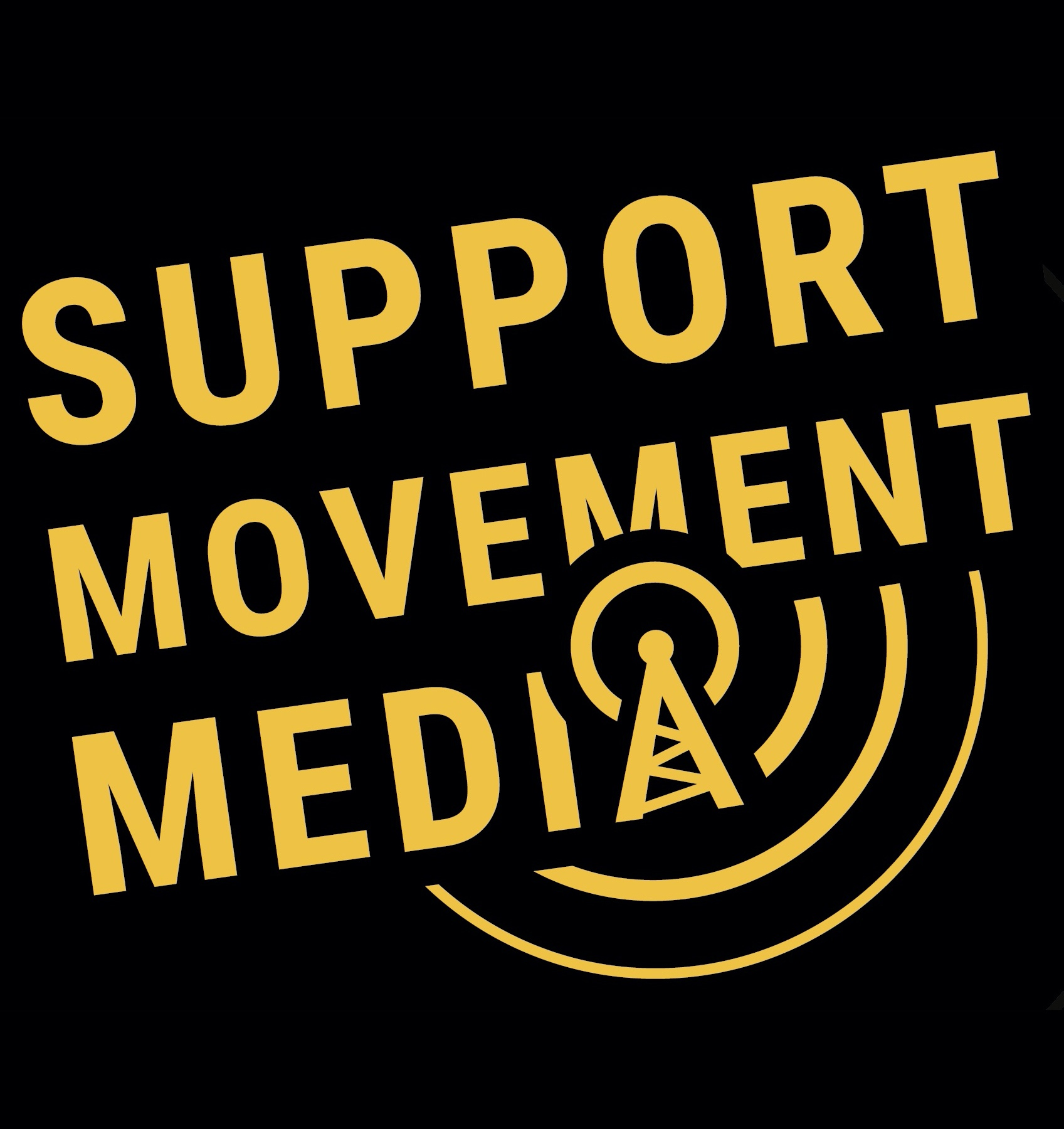How pandemic-era prison life shows the stakes of abolition
This article How pandemic-era prison life shows the stakes of abolition was originally published by Waging Nonviolence.
A few months before COVID became a permanent part of life in the U.S., the New York City Council approved a plan to shut down the infamous jail complex known as Rikers Island and replace it with four smaller facilities. (That plan was later delayed — and city officials have since acknowledged that they likely won’t meet the plan’s legal deadline.) The vote to close Rikers Island came from years of extensive grassroots organizing by reformists and abolitionists alike. But for those left caged there in 2020, the risks posed by COVID were immediate — not just illness and death, but new forms of the isolation, neglect and violence that already shape life inside.
Across the ideological spectrum, public discourse at the time was often quick to compare quarantines and public lockdowns to incarceration. Abolitionist writer David Campbell observed that rhetoric closely as he spent time incarcerated on Rikers Island in 2020. For Campbell, these flawed comparisons held a grain of truth that could help “[broaden] the abolition movement’s personal appeal. … For the first time in living memory, any given abolitionist can assume any given passerby has lived through something vaguely resembling incarceration.”
At the same time, one of the biggest barriers to transforming the carceral state is that gap in lived experience. For most Americans, our image of incarceration is constantly obscured by government rhetoric, punitive traditions of justice, pop culture and the walls themselves. With the onset of COVID, that obscuring effect only grew worse. Through each new wave and variant, inmates around the country have fought to care for themselves and make their struggles visible. Prison abolition has become a mainstream concept, but the lives of those held in jails, prisons and immigrant detention facilities remain far too abstract.

Journalist Victoria Law’s newest book, “Corridors of Contagion: How the Pandemic Exposed the Cruelties of Incarceration,” uses pandemic-era prison life to introduce the guiding principles of abolition. “During the first year of the pandemic,” Law writes that she “received hundreds of letters from people imprisoned across the nation about conditions caused by the coronavirus.” Five of those people (Kwaneta, Jack, Malakki, Mary and Mwalimu) kept up with Law over three years of written correspondence, phone and video calls. Drawing from those conversations, “Corridors of Contagion” follows them through the pandemic in prison, telling intimate stories of how they tried to stay safe, connect to loved ones, engage in political struggle and fight to be released. In the process, Law argues that abolitionist thought and practice can offer special insight into the COVID era more broadly: a missed “opportunity to rethink the flawed logic of the U.S. criminal legal system.”
The book largely proceeds chronologically through the pandemic, with the bulk focused on its first year. By grounding her writing in long-term narratives, Law gives readers a unique view of the turmoil, pain and possibility of that year. We see prison officials hesitate to protect inmates and staff during the first weeks of COVID panic. Inmates protest with handwritten signs during the George Floyd uprisings. A prison guard celebrates as a nearby radio blares coverage of the Jan. 6 insurrection. Law notes in her introduction that recent attempts to document the pandemic have often left out the voices of incarcerated people; in that context, a book like this is a much-needed rejoinder.
Across 200 pages, Law uplifts her correspondents’ voices with forceful language and vivid imagery. When Jack yells descriptions of the outside to Kwaneta “through their shared air vent,” or when Mary rehearses jokes for a talent show on her prison yard, you can feel their efforts to find joy, peace and connection within extreme states of confinement. Colors, smells and scraps of conversation fill in the gaps. Even though “Corridors of Contagion” jumps back and forth between facilities, Law’s eye for detail makes them all feel fleshed out, bustling with activity as the threat of COVID created new routines and policies inside.
Between those personal stories, Law supplies extensive context about the U.S. prison system and prison resistance. Chapter Two borrows the term “prison nation” (coined by University of Illinois at Chicago Professor Beth Richie) to describe how “the United States has a long history of weaponizing confinement against marginalized people.” I could imagine a version of this book that doesn’t zoom out in the same way, but it helps illustrate one of Law’s central arguments: that the structural forces shaping U.S. prisons have consistently made them hotspots for the spread of disease. It also offers a concise entry point to abolitionist histories of the U.S. prison system, synthesizing a wide array of data and scholarship with clarity and focus.
But the book’s most powerful moments come when Law weaves this background knowledge with inmates’ personal stories, showing how prisoners’ efforts to care for each other formed a distinct model of political resistance. One chapter describes Kwaneta “shouting through the door of her solitary cell” to educate neighbors about sexual and reproductive health. In another, Mlawimu describes “practicing socialism” in his unit, sharing fans and cups of ice during California’s extreme heat waves. For Law, these acts of collective care embody the abolitionist spirit, as prisoners repeatedly risked punishment and increased confinement to provide what carceral institutions would not.
When we re-examine the pandemic from inside carceral institutions, we can see how prisoners’ experiences complicate our usual narratives of those first few years. For example, Law notes how raids by prison guards “clad in riot gear” led to a COVID outbreak at one prison in California. As health experts warned against the widespread use of tear gas and pepper spray during the George Floyd uprisings, Law points out that pepper spray has been a fact of life for incarcerated people before and during the pandemic. While other parts of the U.S. government implemented policies to reduce the spread of COVID, routine instances of state violence directly contributed to rising case numbers.
“Corridors of Contagion” offers vital lessons when many people in the U.S. have moved past the idea that COVID-19 is an ongoing threat, while reckoning with the loss of pre-pandemic “normalcy.” Inmates’ narratives of the early pandemic show how many of those most vulnerable to COVID were deemed disposable by the governments that housed them. But Law also describes a moment when social movements were experimenting with public health and decarceration as mutually beneficial paths toward social transformation — both inside and outside of jails, prisons and immigration detention facilities. “Without a more permanent record,” she asks, “would the general public, once masks and social distancing were discarded, forget about the long genealogy of policies, laws and conditions that exacerbated the pandemic — and, if left unchanged and unaddressed, would it again prove fatally inadequate when the next crisis hit?”

Waging Nonviolence needs to raise $10,000 by the end of the week. Make a donation today!
This summer, cases have surged again due to multiple new variants, waning immunity from vaccines and the abandonment of disease mitigation strategies. A lack of widespread testing and data collection makes it difficult to determine just how severe this surge really is. At the same time, state and local governments are increasingly experimenting with mask bans that rely on ambiguous language and fear-mongering about crime and protest. More than a year after the federal government’ Public Health Emergency for COVID-19 expired, the social safety nets implemented to keep millions afloat have started to expire, too.
Although jail and prison populations dropped in the first few months of the pandemic, they began to regrow “as governments adapted to the virus.” As the Prison Policy Institute writes, “reforms [have] become increasingly central to political debate — and are even scapegoated to resurrect old, ineffective ‘tough on crime’ policies.” A “return to normal” in public health has coincided with a “return to normal” in the U.S. carceral system — which continues to hold more people per capita than any other country. In both cases, Law and her correspondents suggest that we can hold on to the political imagination of COVID-era social movements while adapting it to our ever-shifting terrain.
Whether you’re new to police and prison abolition or a more experienced reader looking for abolitionist analysis of our current moment, “Corridors of Contagion” is a necessary read. Its narratives will also be very useful for those interested in documenting the pandemic and staying prepared for future disasters. Looking from the inside out, we can find power in building new forms of community care outside of government intervention, which Law summarizes in a common abolitionist slogan: “We keep us safe.”
This article How pandemic-era prison life shows the stakes of abolition was originally published by Waging Nonviolence.
People-powered news and analysis
Source: https://wagingnonviolence.org/2024/09/victoria-law-corridors-of-contagion-review/
Anyone can join.
Anyone can contribute.
Anyone can become informed about their world.
"United We Stand" Click Here To Create Your Personal Citizen Journalist Account Today, Be Sure To Invite Your Friends.
Humic & Fulvic Liquid Trace Mineral Complex
HerbAnomic’s Humic and Fulvic Liquid Trace Mineral Complex is a revolutionary new Humic and Fulvic Acid Complex designed to support your body at the cellular level. Our product has been thoroughly tested by an ISO/IEC Certified Lab for toxins and Heavy metals as well as for trace mineral content. We KNOW we have NO lead, arsenic, mercury, aluminum etc. in our Formula.
This Humic & Fulvic Liquid Trace Mineral complex has high trace levels of naturally occurring Humic and Fulvic Acids as well as high trace levels of Zinc, Iron, Magnesium, Molybdenum, Potassium and more. There is a wide range of up to 70 trace minerals which occur naturally in our Complex at varying levels. We Choose to list the 8 substances which occur in higher trace levels on our supplement panel. We don’t claim a high number of minerals as other Humic and Fulvic Supplements do and leave you to guess which elements you’ll be getting.
Order Your Humic Fulvic for Your Family by Clicking on this Link, or the Banner Below.
Our Formula is an exceptional value compared to other Humic Fulvic Minerals because...
It’s OXYGENATED
It Always Tests at 9.5+ pH
Preservative and Chemical Free
Allergen Free
Comes From a Pure, Unpolluted, Organic Source
Is an Excellent Source for Trace Minerals
Is From Whole, Prehisoric Plant Based Origin Material With Ionic Minerals and Constituents
Highly Conductive/Full of Extra Electrons
Is a Full Spectrum Complex
Our Humic and Fulvic Liquid Trace Mineral Complex has Minerals, Amino Acids, Poly Electrolytes, Phytochemicals, Polyphenols, Bioflavonoids and Trace Vitamins included with the Humic and Fulvic Acid. Our Source material is high in these constituents, where other manufacturers use inferior materials.
Try Our Humic and Fulvic Liquid Trace Mineral Complex today. Be 100% Satisfied or Receive a Full Money Back Guarantee. Order Yours Today by Following This Link.







